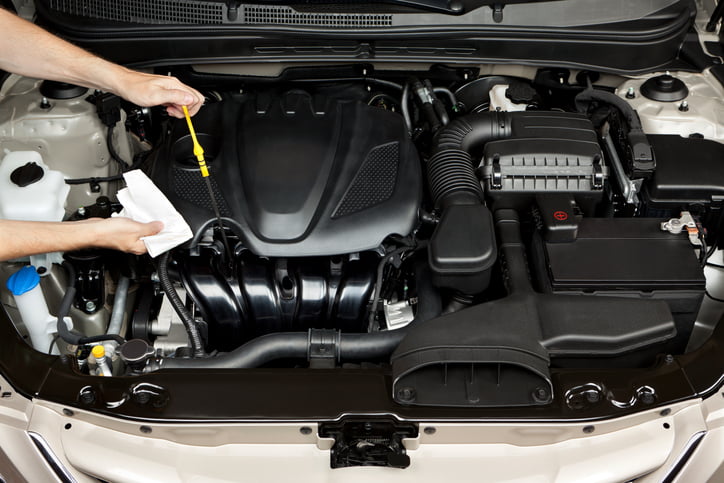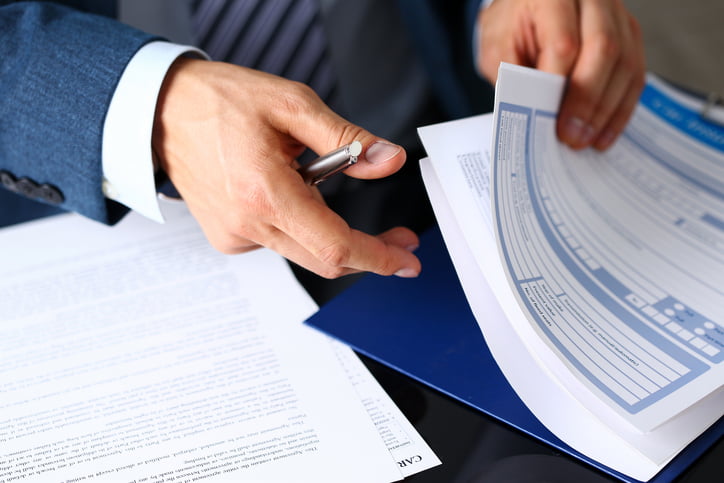Buying a used car may be one of the biggest purchases you ever make, so it’s vital you get it right. While most people buy used cars without any issues, you should be aware that there’s a whole host of different problems a used car could have, from a murky history to a faulty engine. You could start noticing them as soon as you start driving it, or they could appear months down the line, when you’re hitting 70 on the motorway – potentially dangerous and probably expensive.
Sadly, we can’t always rely on sellers to tell us everything about a car, so it’s up to us to perform a little due diligence on any used car we’re looking to buy. So, to provide a strong starting point, here are some simple checks you can carry out to help you get the right car at the right price and in the best possible condition.
Research
Before you go shopping, it’s important to do your research.
1.Background
Before you get out there looking at cars, it’s best to plan what you want. You need to choose a car that meets all your requirements, fits your lifestyle and your budget. Here are a few important things to consider to help you draw up a shortlist:
Fuel type. This will have a huge bearing on your decision. Diesel cars are generally more expensive to buy than petrol, so, in order to balance this with the reduced running costs you’ll enjoy with the diesel, you’ll need to be doing at least 12,000 miles a year. Read more about different fuel types.
- Think hard about how you’re going to be using the vehicle. Cars with smaller engines are generally cheaper to run, and tend to perform better in towns and cities – ideal if you’re just after a little run-around. Conversely, a diesel is more suited to longer journeys and motorways, and if it was made after 2009 it has to be driven regularly in order to burn off excess soot that collects in the DPF (diesel particulate filter).
- Lastly, you’ll have to take into account additional costs, such as tax and insurance and plan how you’re going to pay for the car. If you’re not paying cash, research finance options such as HP and PCP.
2.Seller
Do you want to buy from a dealership, or a private seller? Are you going to use a car selling website? It might be cheaper to buy from a private seller or an auction, but a licensed dealership will usually provide greater security and peace of mind. A dealer is much more likely to offer you a trade-in on your old model, and may even provide you with a warranty and MOT. You should also be able to check a dealer’s reviews online which will tell you if you can trust them if you do need help or repairs after you’ve bought it. Recommendations from friends and family are always good too.
If you don’t need a new car desperately, buying at the right time could save you money. Car salesman generally work to strict quarterly targets, so may be more eager to shift units at the end of March, June, September or December, meaning you might get a better deal. Private sellers will usually have a fixed price in mind, but buying at odd times of the year, such as immediately after Christmas, may cut down the competition and give you some wiggle room. Above all, it’s important to know the market. Keep an eye on prices for your preferred make and model in the weeks before you buy.
3.History
It’s a simple click of the mouse to check your car’s history, and could save you a lot of money and hassle. Studies have revealed that as many as one in three cars have a hidden history, so do your homework. A quick check online will tell you whether your prospective car’s been stolen or written off, whether there are any mileage discrepancies or any outstanding finance (which you could end up being chased for).
4.Are you Properly Prepared?
Before you view the car, you need to make sure you’re properly prepared. Here’s a useful checklist:
- If you’re buying from a dealer, check the trade-in price for your current car.
- Research common/known faults for the make and model you’re interested in buying so you know any specifics you need to look out for – online forums can help you with this.
- Get in touch with the seller beforehand and say that you’d like to view the car cold. You want to make sure that it starts ok from cold – if it has starting problems these could be hidden if the seller warms it up before you see it.
- Arrange to meet during daylight hours.
Checking the Car
Once you’ve completed all your research, it’s time to check out the vehicle itself. Here are some essential checks you can perform at the dealership, auction, or seller’s home to help identify any problems and also a guide on what to look for while you’re test driving it.
5.Bodywork
Before you get in the car, give it a visual once over as you can spot warning signs quite easily. Look out for:
- Check for any obvious imperfections, such as rust, dents, dings or scratches. While these are usually an easy fix, they may prove a useful negotiating tool.
- Check out the lines of the car. Get on your haunches and position yourself, in turn, at each front corner of the vehicle. Look along each side of the car for any ripples or inconsistencies that might indicate body repairs.
- Look for any significant gaps between panels. Again, this could tell you that the car has been in an accident and had to be repaired.
- If you can look underneath as well, then do. Look for rust or obvious leaks.
6.Tyres
You can tell a lot about a car from its tyres. Check the tread depth, condition and general wear. Is the wear consistent across all four tyres? If not, this could be a sign that the car has a more serious underlying problem. Here’s what to look for:
- Camber wear: If the inside edge, outside edge or shoulder shows noticeably more wear than the rest of the tyre, the car’s suspension could be misaligned.
- Feathered wear: Run your hand along the tyre; if it feels smooth in one direction and rough in the other, this could indicate toe misalignment, or deeper issues with the steering linkage or steering arms.
- Cupped wear: Look for random smooth patches on the tread; this could mean the wheels aren’t properly balanced, or worse, the shocks and struts are worn out.
Also, be sure to check the brand of each tyre. Are they all the same? Is it a premium brand? Budget tyres could mean the seller’s cut corners elsewhere too.
7.Basic Functions & Controls
Before you start driving, test the functions and controls. Minor faults may be easy to correct, but again these could prove a handy bargaining tool. Check to make sure everything is working as it should – electric windows, headlights and wipers. Open and close all the doors and the boot; and while you’re back there, check if the car has a spare tyre or space saver.
8.Engine
It’s always sensible to have a look under the bonnet before firing up the engine. Here are some simple checks you can carry out on the forecourt:
- Make sure the engine is clean and well-maintained. Any excess gunk or fluid may indicate a leak.
- Check the battery. Look for any rust or debris around the battery’s terminals.
- Check the levels of oil, brake fluid and power steering fluid. Low fluid levels are a sure sign that a vehicle hasn’t been properly maintained, or worse, the car could have a leak.
- While you’re checking your levels, remember to look inside the oil cap itself. A white mayonnaise-like substance is often a sign that coolant has mixed with the oil; this could mean the head gasket has blown.
Now you’re ready to start her up. Have a good, long listen to the engine; check for any unusual clunks or rattles, as well as any whistling or squealing from the fan or drive belts.
Check the exhaust fumes. A small stream of white smoke when you start the car is fine. Any more than that is a red flag, particularly if the car is emitting blue or black smoke, and could indicate a damaged cylinder head, blown head gasket or cracked engine block.
9.Handling
Now you’re ready for the test drive itself. Allow at least an hour for your test drive, and, if possible, put the car through its paces on a variety of different roads – A roads, B roads, town centres and dual carriageways. It’s important to see how the car performs in different scenarios. Here are some key points to consider when you’re on the road:
- Steering. Listen for any unusual sounds when you turn the wheel; a little whining sound is normal with power steering, but anything more – any odd squeaks or rattles – may indicate a problem. Once you’re on a long stretch of road, check to make sure the car doesn’t veer to the left or right. Turn at low speed as well, and check that when you turn 90 degrees you don’t hear noises.
- Braking. Press the brakes to check responsiveness and perform a few emergency stops. Ensure the vehicle brakes in a straight line, and listen out for any unusual sounds or vibrations.
- Move through the gears. Make sure there’s no grinding or crunching; changes should be smooth and efficient. With an automatic, gear changes should be fluid, immediate, and virtually silent.
- Get a feel for the suspension. The ride should be smooth and comfortable, with the vehicle easily absorbing any bumps or potholes in the road. Look out for any excess bouncing or juddering.
10.Documents
Once you arrive back at the dealership or the seller’s home, it’s time for the final checks. This is your last chance to quiz the seller, so be thorough:
- Ask to see all relevant documents – fully stamped service book, MOT certificate.
- If you’re buying from a dealer, ask about the warranty. What does it cover? How long is it valid for?
- Ask about previous owners – how many, and how they used the vehicle.
- Enquire about any modifications or repairs.
- Lastly, double-check with the seller that your prospective car isn’t an ex-taxi or ex-rental. The sale of these types of vehicles is on the rise, and because of the way they’ve been handled, they may be more prone to issues down the line.
- Don’t immediately pay the sticker price – always negotiate. Any little things you’ve noticed while checking can be used to knock some money off, so make sure you’re totally happy that you’re getting value for money.
And that’s it, you’re all done. If you’re satisfied that your new car meets all your criteria, strike a deal, and happy motoring!
Now you’ve found your perfect car, keep performance high with Redex. For more information, click here to visit the Redex website and get a better drive today.



